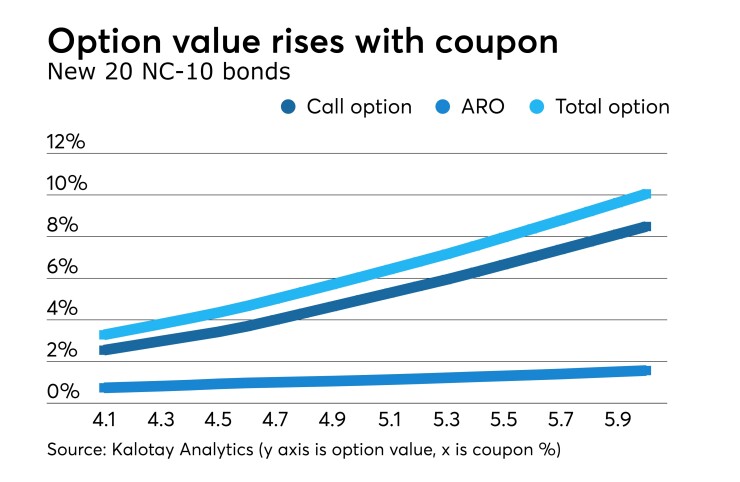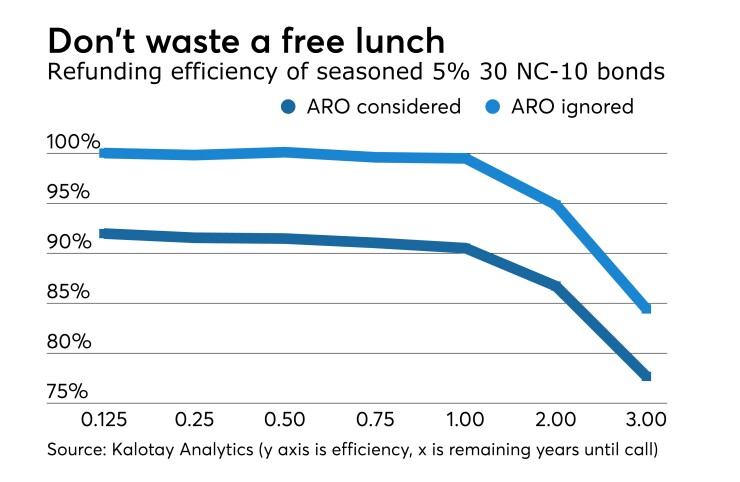An advance refunding is a complex transaction. There are several moving parts, and it is easy to lose track of where the value is. Two recent papers on this topic are
As some may recall, the authors of the latter paper made the stunning assertion in their 2013 draft (still posted on the
Fast forward to 2017. After seeing that the paper was accepted by the Journal of Finance, I wondered how the authors handled the flaw of their central claim in 2013. It turns out they made a complete U-turn; the central claim has vanished. In fact, they inserted a counterexample showing that advance refunding can be optimal. Better late than never! However, without the (flawed) original claim, it is unclear that what remains is particularly new or insightful. The paper also displays a lack of familiarity with the muni market in its failure to recognize the dominance of 5% non-call 10 bonds, which are tailor-made for advance refunding. A discussion of what went wrong in 2013 would have been a service to the academic community.
In the "Free Lunch" article Lori Raineri and I examine the value of the advanced refunding option (ARO). To begin with, the ARO is free to issuers — for well-known reasons, investors actually prefer advance-refundable bonds. Quantifying its value is challenging, due to the imperfect correlation between the issuer's funding cost and Treasury rates; the former determines the refunding rate, and the latter the escrow yield. At the historically low Treasury rates prevailing today, the value of the ARO of a new 20-year 5% NC-10 bond is roughly 1% of face amount. The figure below puts this in perspective – the value of the call option is roughly 5% of face value, with the total optionality being 6%. The option values increase with higher coupons, as expected. But let's keep in mind that although higher coupons provide more option value (as a percent of par), they also reduce the size of the issue.

The key point of our paper is that an ARO should not be wasted by advance refunding near the call date. The "free lunch"' to consider here is the ARO of the replacement issue. Advance refunding is permitted only once in a funding's lifecycle. Thus the replacement of an advance refunded issue is ineligible for advance refunding, but if an issue is called (current refunded), the ARO remains alive.
The efficiency of refunding is quantified by the percentage of the option value captured by transacting. The figure below shows the effect of including the ARO of the replacement issue. As the darker blue line indicates, it is considerably lower than when the ARO is ignored, signaling that advance refunding close to the call date wastes a free lunch. A preferable alternative is to construct a hedge which locks in savings, while retaining the ARO.

A secondary point made in our paper challenges the 'negative arbitrage' terminology. Negative arbitrage is said to exist if the yield of the refunding issue exceeds that of the escrow, the implication being that there is a loss of value. We observe that the issuer's funding cost to the call date may be a better reference point than the yield of the replacement bond. If the issuer's funding cost to the call date is lower than the yield of the escrow (loosely speaking, if muni rates for short maturities are lower than comparable Treasuries), the cost of the escrow is less than the market value of the defeased issue. Thus, our definition is consistent with the conventional usage of 'arbitrage'.
Issuers and their advisors can use these findings to make better advance refunding decisions. Specifically, recognize that you lose advance refunding option of the replacement issue when you pull the trigger close to the call date. And instead of obsessing over negative arbitrage, use refunding efficiency as your signal to transact.





